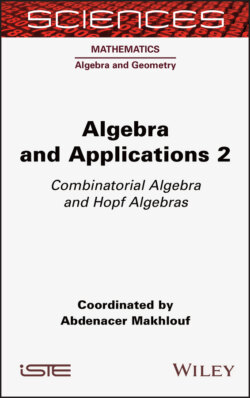Читать книгу Algebra and Applications 2 - Группа авторов - Страница 10
1.2.1. Algebras
ОглавлениеA k-algebra is by definition a k-vector space A together with a bilinear map m : A ⊗ A → A which is associative. The associativity is expressed by the commutativity of the following diagram:
The algebra A is unital if there is a unit 1 in it. This is expressed by the commutativity of the following diagram:
where u is the map from k to A defined by u(λ) = λ1. The algebra A is commutative if , where : A ⊗ A → A ⊗ A is the flip, defined by .
A subspace J ⊂ A is called a subalgebra (respectively a left ideal, right ideal and two-sided ideal) of A if m(J ⊗ J) (respectively m(A ⊗ J), m(J ⊗ A), m(J ⊗ A + A ⊗ J)) is included in J.
With any vector space V, we can associate its tensor algebra T(V). As a vector space, it is defined by:
with V⊗0 = k and V⊗ k+1 := V ⊗ V⊗k. The product is given by the concatenation:
The embedding of k = V⊗0 into T(V) gives the unit map u. The tensor algebra T(V) is also called the free (unital) algebra generated by V. This algebra is characterized by the following universal property: for any linear map φ from V to a unital algebra A, there is a unique unital algebra morphism from T(V) to A extending φ.
Let A and B be the unital k-algebras. We put a unital algebra structure on A ⊗ B in the following way:
The unit element 1A⊗B is given by 1A ⊗ 1B, and the associativity is clear. This multiplication is thus given by:
where : A ⊗ B ⊗ A ⊗ B → A ⊗ A ⊗ B ⊗ B is defined by the flip of the two middle factors:
